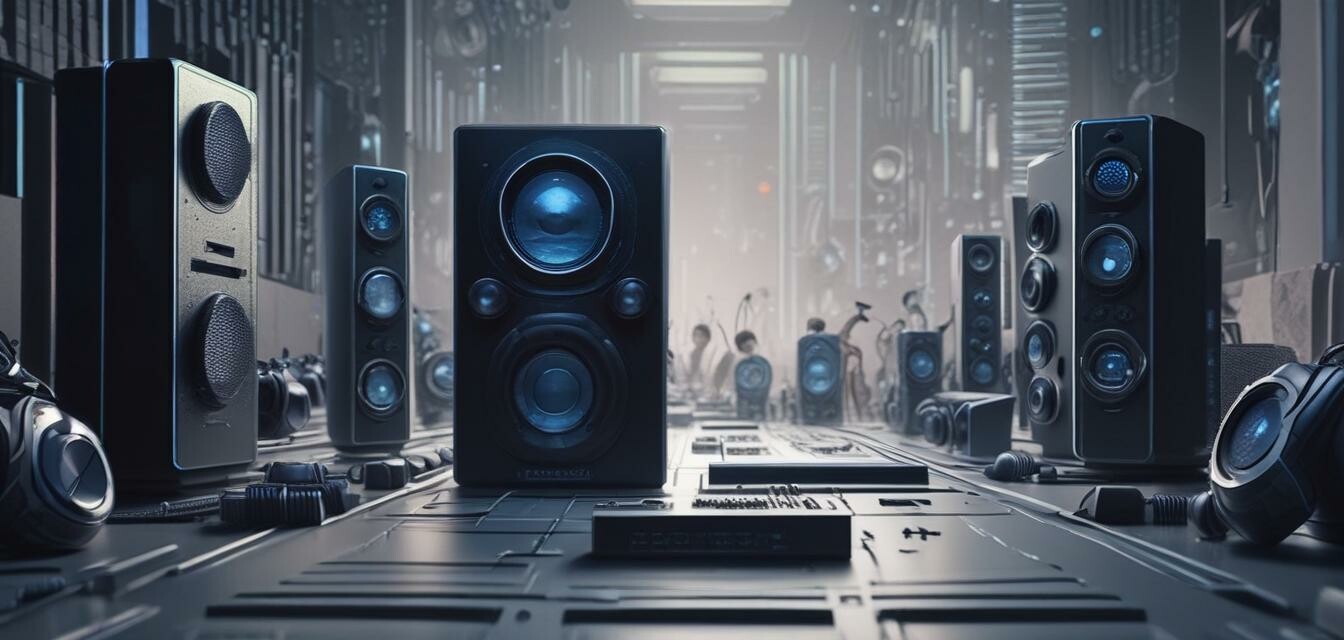
The Role of Digital Assistants in Modern Audio Systems
- Digital assistants enhance user interaction with audio systems.
- Integration with various smart home devices is a key trend.
- Voice commands simplify control and improve accessibility.
- Future developments will focus on personalized audio experiences.
The world of audio systems has transformed dramatically over the past few years, with the integration of digital assistants leading the charge. As technology evolves, these virtual helpers are becoming more prevalent in how we experience sound. This article dives into how digital assistants are revolutionizing modern audio systems, enabling seamless user interactions, and what trends we can expect in the future.
Understanding Digital Assistants
Digital assistants, such as Amazon's Alexa, Google Assistant, and Apple's Siri, are software applications designed to mimic human interaction. They use voice recognition and natural language processing to perform tasks and provide information. In audio systems, these assistants allow users to control their devices hands-free, enhancing convenience and functionality.
How Digital Assistants Work
At their core, digital assistants utilize complex algorithms and databases to understand and execute user commands. Below is a simplified breakdown of their functionality:
| Step | Description |
|---|---|
| 1 | User gives a voice command. |
| 2 | The assistant processes the voice command using AI. |
| 3 | The assistant executes the command through connected devices. |
| 4 | User receives feedback or a response from the assistant. |
Benefits of Digital Assistants in Audio Systems
Integrating digital assistants into audio systems offers several advantages, which can greatly enhance the user's listening experience:
- Hands-free Control: Voice commands allow users to adjust volume, skip tracks, or change inputs without needing a remote or app.
- Intuitive User Experience: Simplified commands make it easy for users of all ages to interact with their audio systems.
- Integration with Smart Home Devices: Users can command their audio systems in conjunction with other smart devices, creating a cohesive smart home environment.
- Personalization: Digital assistants can learn user preferences over time, allowing for tailored recommendations and settings.
Current Trends in Audio Systems
As technology evolves, the integration of digital assistants continues to advance. Here are some current trends dominating the market:
| Trend | Description |
|---|---|
| Smart Device Integration | Combining audio systems with smart home platforms for synchronized functionality. |
| Enhanced Voice Recognition | Continuous improvements in AI improve accuracy and responsiveness of voice commands. |
| Multi-Room Audio | Digital assistants enable control of multiple audio devices throughout the home from a single command. |
| Expanded Ecosystems | Increased partnerships among audio brands and tech companies to create comprehensive audio experiences. |
Challenges and Considerations
Despite the many benefits, there are challenges in integrating digital assistants within audio systems:
Pros
- Convenience of hands-free operation.
- Easy access to a multitude of functions.
- Continuous innovation and updates for features.
Cons
- Possible privacy concerns with voice recordings.
- Dependency on stable internet connection.
- Initial setup might be intimidating for some users.
The Future of Digital Assistants in Audio
Looking forward, the role of digital assistants in audio systems is set to expand significantly. We can anticipate:
- More Advanced AI: As artificial intelligence improves, we can expect even more natural interaction and responsiveness from these devices.
- Greater Personalization: The ability for assistants to learn specific users’ habits will enhance audio playback and control.
- Universal Compatibility: Integration with a wider variety of devices will create harmonious smart environments.
- Improved Privacy Controls: Manufacturers will likely enhance transparency around data usage to address consumer concerns.
- Emergence of New Features: New functionalities based on voice that offer novel ways to experience audio entertainment.
Conclusion
Your engagement with audio systems is destined for a dynamic transformation with the rise of digital assistants. Their ability to streamline interactions, improve accessibility, and integrate with smart technologies reflects a broader trend towards more engaging and personalized audio experiences. Whether you're a casual listener or an audiophile, embracing these advancements can enhance your enjoyment to new heights.
For more insights on audio trends and recommended products, explore our News and Trends section and stay informed. You can also dive into our Buying Guides for expert recommendations on selecting the right devices for your home.